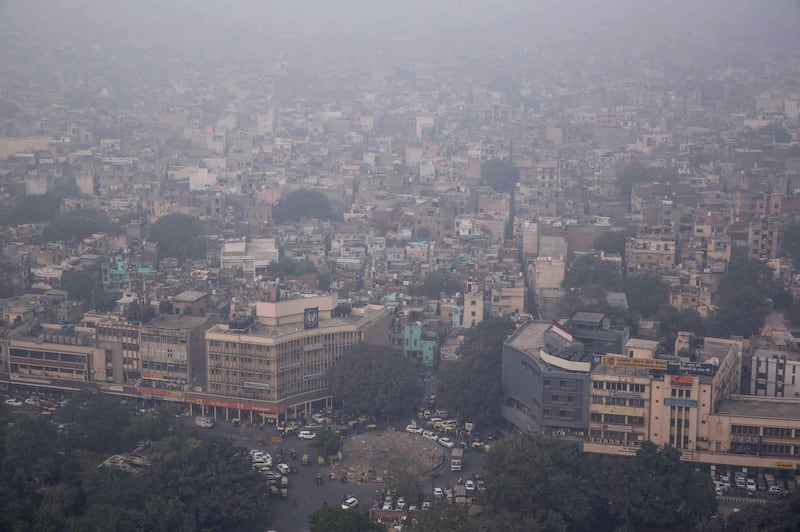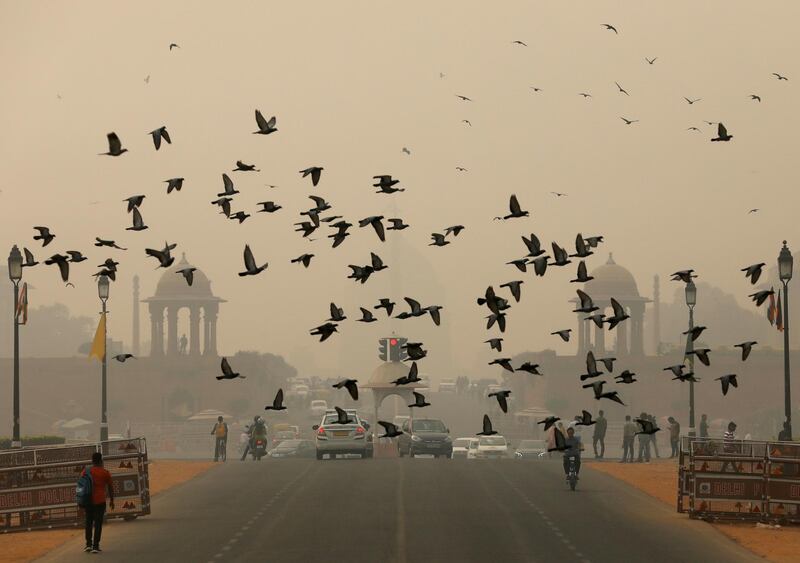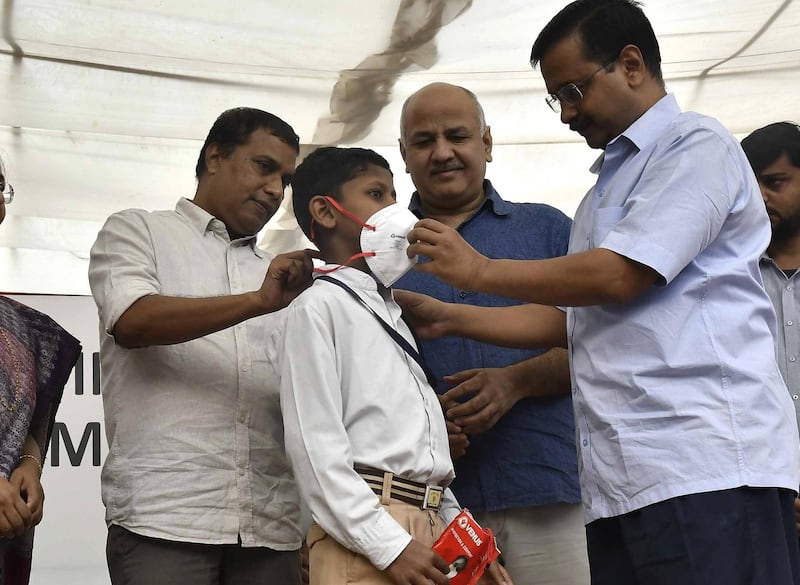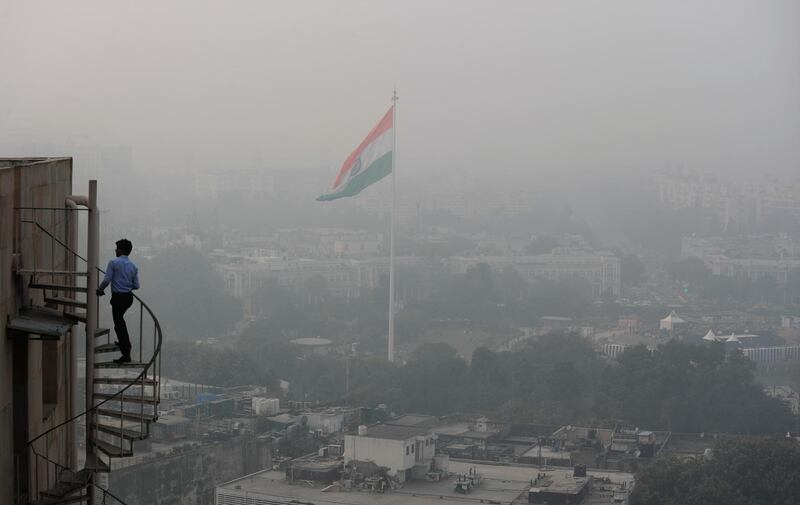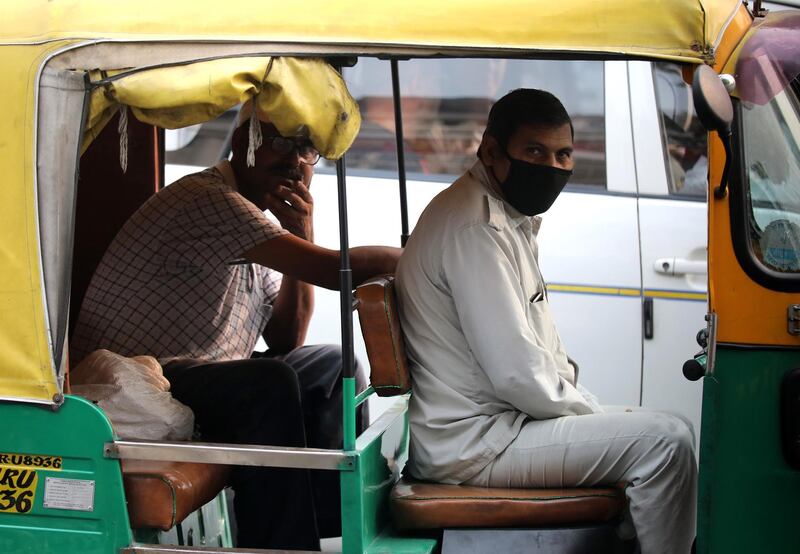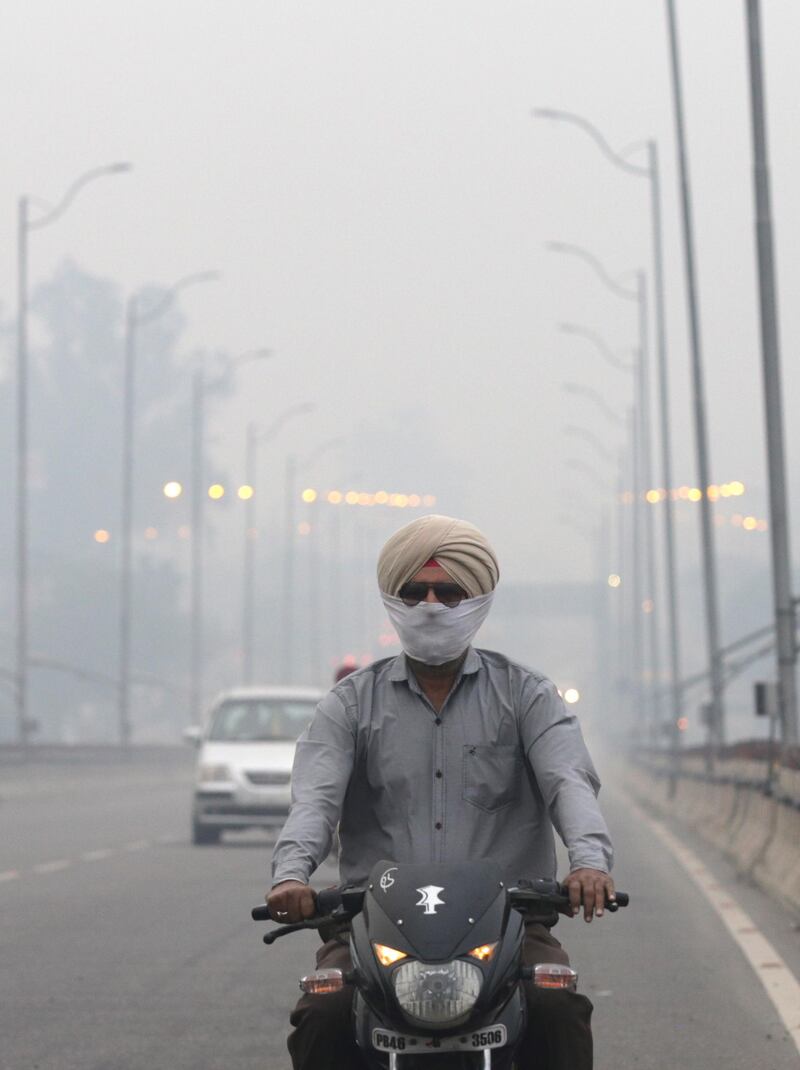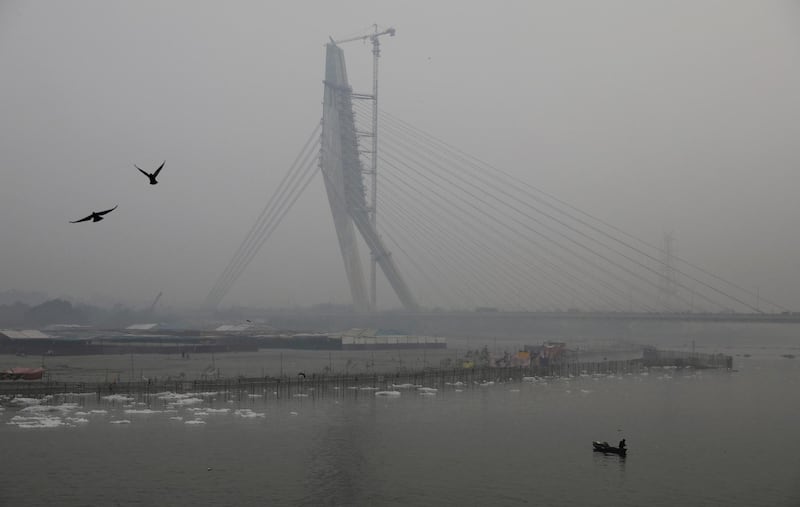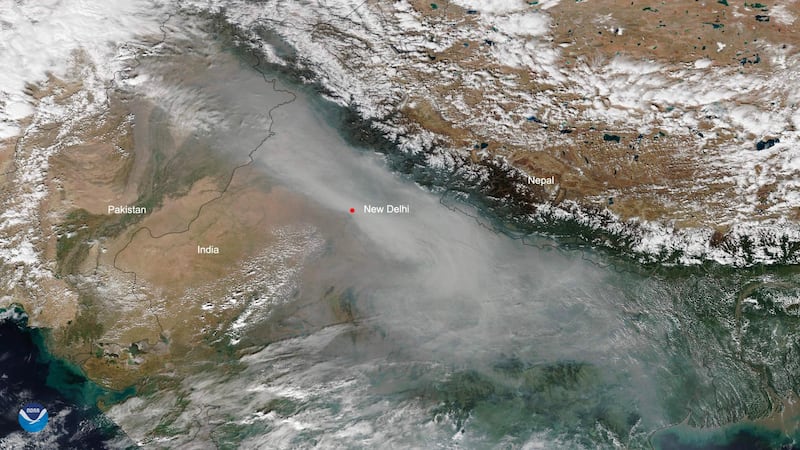A surge in the number of farm fires in India’s northern Punjab has caused air quality to descend to “severe” levels in India’s capital city despite the government making efforts to reduce Delhi’s air pollution.
The air quality index in the city of 22 million people hovered at an average of 450 — or “severe” category — on Thursday, according to the Central Pollution Control Board, the country’s top environmental body.
More than 3,600 cases of stubble burning were recorded in Punjab on Wednesday, the highest number of farm fire incidents this season, leading to high pollution levels.
Particulate matter (PM 2.5) levels were over the 450 mark on average across the city — which is severely over the global safe limits.
PM 2.5 is fine dust and other harmful particles measuring less than 2.5 microns that penetrate deep into the lungs and enter the bloodstream, leaving to respiratory and cardiac diseases.
'Hazardous' smog chokes India's capital
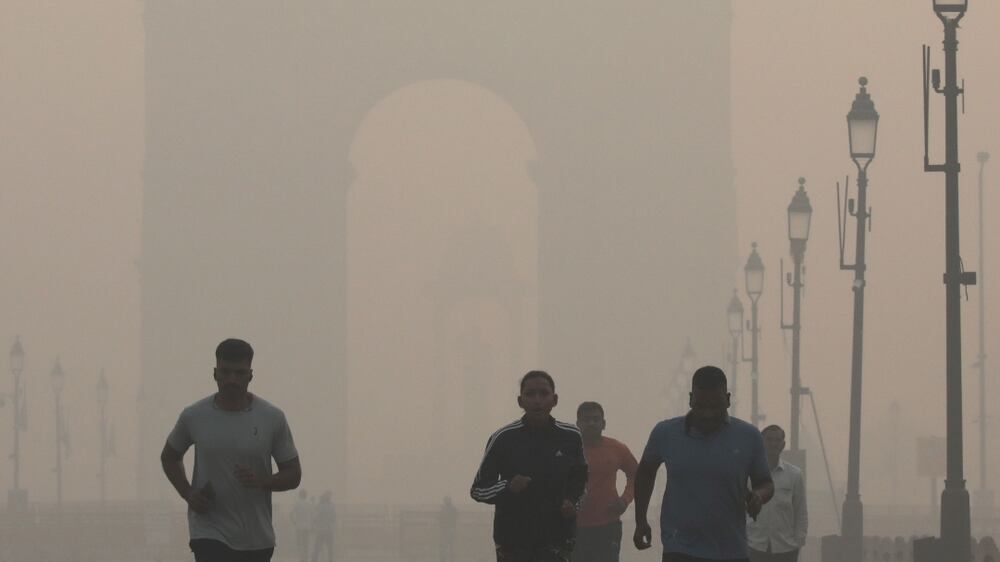
The World Health Organisation considers 5 micrograms per cubic metre as the safe level of exposure to particulate pollution.
In Noida, a satellite city, the average AQI was recorded at a “severe” 422, while the PM 2.5 level was 500.
Federal Environment Minister Bhupender Yadav blamed the farm fires in northern Punjab state for turning Delhi into a “gas chamber”.
Delhi is one of the world’s most polluted capital cities, suffering from high levels of air pollution throughout the year.
But toxic air levels are at their worst during winter, when winds push the smoke from farmlands into the city and shroud it under a blanket of smog.
The practice of stubble burning becomes an issue every winter, when farmers in the vast farmlands of neighbouring states Haryana and Punjab burn paddy stubble to clear their fields for the next crop.
Most of the smoke travels to Delhi due to prevailing winds and mixes with the city air to form a noxious blanket of smog that aggravates the pollution crisis.
Vehicular, industrial, and road dust remain the chief pollutants, according to government figures.
Although stubble-burning has been outlawed for many years, thousands of farm fires are reported in the twin breadbasket states.
The government decriminalised the method last year following protests by farmers, but continued with the statutory prohibition.
More than 16,000 cases of stubble-burning were recorded in Punjab in September and October this year.
Sangrur, the home district of Punjab Chief Minister Bhagwant Mann, registered the highest number, with 677 cases.
“As of today, Punjab, a state run by the AAP government, has seen an over 19 per cent rise in farm fires over 2021. Haryana has seen a 30.6 per cent drop. Just today, Punjab saw 3,634 fires. There is no doubt over who has turned Delhi into a gas chamber,” BJP member Mr Yadav said.
He blamed the AAP, which is also the party of Delhi Chief Minister Arvind Kejriwal, for failing to tackle the incidents by providing enough funds to farmers for alternative methods such as bio-decomposers.
Mr Yadav said that 2.1 billion rupees were left unspent in Punjab last year and his government gave 2.8 billion rupees ($33 million) to Punjab for crop residue management machines this year, so 4.9 billion rupees "was available but the state government chose to sit with the funds, forcing helpless farmers to burn the crop residue”.
Mr Kejriwal, who last month announced measures including banning construction and an anti-dust campaign to tackle the menace in Delhi, criticised the central government for politicising the issue.
“It is a problem that has affected all of northern India but it is being shown as a problem only in Delhi and Punjab. Whatever the Delhi government can do at its level, we are doing it,” Mr Kejriwal said.
